Ready to see the market clearly?
Sign up now and make smarter trades today
Education
September 21, 2024
SHARE
Day Trading Futures: Strategies, Risks, and Rewards Explained
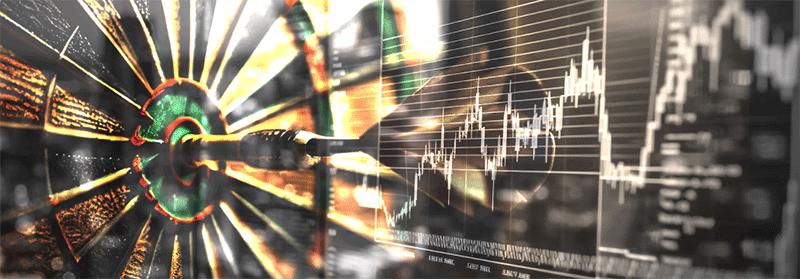
In the fast-paced world of day trading futures, where fortunes can vanish in the blink of an eye, it’s paramount to have a solid grasp of market dynamics and risk management strategies. While the allure of quick profits is captivating, treading cautiously is essential, as every potential reward comes with corresponding risks.
In this comprehensive guide, we’ll delve into day trading futures, exploring foundational concepts, winning strategies, and advanced tools that can give traders a competitive edge. We’ll also examine prominent risks, including the double-edged sword of leverage and the ever-present market volatility.
Read on to increase your knowledge and gain valuable insights into day trading futures.
What Exactly Is Day Trading Futures?
Day trading futures involves the purchase and sale of futures contracts within the same trading day, with the aim of profiting from small price movements.
This practice appeals to traders for several reasons, including:
-
Liquidity: Futures markets offer high liquidity, ensuring ease of entry and exit.
-
Volatility: Intraday price fluctuations create opportunities for quick profits.
-
Diversification: Futures cover a wide range of assets, enabling more opportunities.
-
Accessibility: Traders can access various futures markets easily.
-
Tax Benefits: Some traders benefit from potential tax advantages associated with futures markets.
However, it’s a high-risk strategy that demands a deep understanding of the markets and risk management. To understand this concept better, let’s break it down step by step, starting with a foundational definition of day trading.
What Is Day Trading in Simpler Terms?
Day trading is a short-term trading strategy in which individuals trade financial instruments (such as stocks, options, currencies, or futures contracts) within the same trading day. Typically, day traders do not hold positions overnight, as they aim to:
-
capitalize on intraday volatility and
-
profit from short-term price movements
Now, let’s explore how day trading is applied in the futures market and why traders choose futures contracts.
Application Within the Futures Market
Futures contracts are financial derivatives that involve:
-
The buyer’s commitment to purchase a set quantity of an underlying asset.
-
The seller’s commitment to sell at a predetermined price.
-
The agreement for this transaction to occur on a fixed future date.
Day trading futures means buying and selling contracts within a single trading day to make a profit from price changes. Here’s the step-by-step process:
|
Steps |
Explanation |
|
|
I |
Choosing a Futures Market |
Traders pick a market based on their preference, expertise, and budget.
Common futures markets include:
|
|
II |
Performing Technical Analysis |
Once a futures market is chosen, traders perform technical analysis by:
Traders often use short-term timeframes (like minutes or hours) to spot potential trading opportunities. |
|
III |
Gaining Leverage |
Leverage in futures trading is significant because:
|
|
IV |
Risk Management |
To manage risk in day trading futures:
|
|
V |
Continuous Monitoring |
Day traders in futures markets continuously monitor their positions and the market due to high volatility and risk.
They need to make quick decisions to enter or exit trades as market conditions change rapidly. |
Winning Strategies for Day Trading Futures
Day trading futures can be highly rewarding, but success depends on the strategies and tools you use. This section explores winning strategies, with a primary focus on the power of technical analysis. It includes the use of:
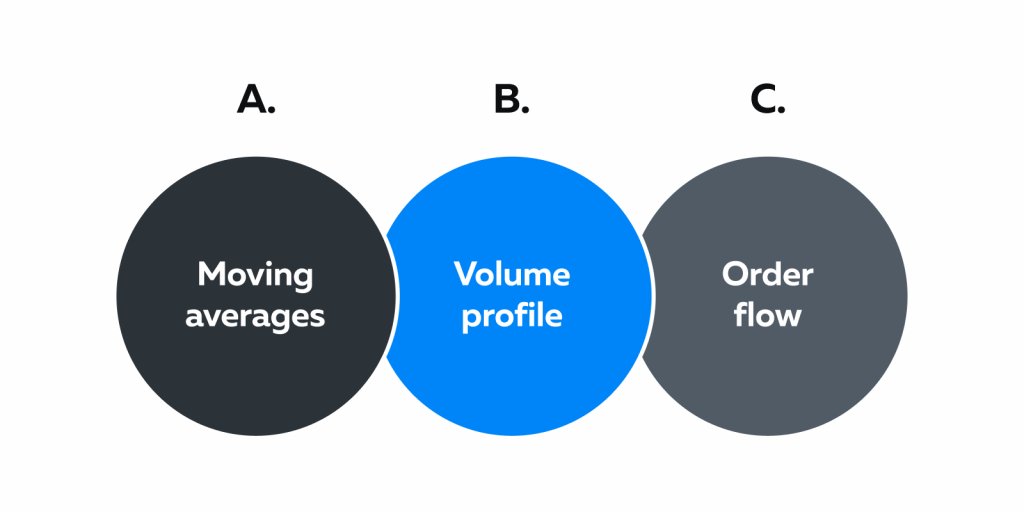
All these strategies can be enhanced using Bookmap, a popular trading visualization platform. Let’s gain an in-depth understanding.
The Power of Technical Analysis
Technical analysis is a cornerstone of day trading futures. Most traders perform technical analysis by analyzing historical price data. They study multiple indicators and chart patterns to spot trends.
Here are some key aspects of technical analysis:
Moving Averages: Meaning, Purpose, and Types
-
These are fundamental technical indicators used to identify trends in price movements.
-
They help smooth out price data and show where the market is heading.
-
Moving averages come in various forms, with Simple Moving Averages (SMA) and Exponential Moving Averages (EMA) being the most common.
How Do Moving Averages Help in Identifying Trends?
Let’s understand the relationship between the price of an asset, moving averages, and the market trend through the table below:
|
Relation |
Type of Trend |
|
Price of Asset>Moving Average |
Uptrend |
|
Price of Asset< Moving Average |
Downtrend |
Bookmap Insight: Overlaying Moving Averages on Bookmap’s Heatmap:
-
-
Bookmap is a powerful trading platform that provides real-time market data visualization.
-
Overlaying moving averages on Bookmap’s heatmap can enhance your technical analysis by allowing you to see the relationship between moving averages and order flow.
-
Volume Profile: Meaning and Purpose
-
Volume Profile is another essential tool for day traders.
-
It helps identify potential support and resistance zones based on the trading volume at specific price levels.
How Volume Profile Identifies Potential Support/Resistance Zones
-
Volume Profile displays a histogram on the chart.
-
It shows the volume traded at various price levels.
-
Peaks and valleys in the profile are used to determine the support and resistance price levels.
Bookmap’s Volume Dots and Their Significance
-
Enhanced Volume Profile: Bookmap improves Volume Profile analysis through Volume Dots.
-
Visualizing Volume: These color-coded dots visualize traded volume at various price levels.
-
Trading Insights: Traders rely on them to assess critical price levels and identify potential entry or exit points.
Order Flow
-
Order Flow analysis is the examination of real-time buying and selling pressure in the market.
-
It helps traders understand the dynamics of supply and demand at any given moment.
How Does Order Flow Help to Understand Real-Time Buying/Selling Pressure?
-
Order flow analysis, helps traders to understand the strength of market participants.
-
They can also identify imbalances that may lead to price movements.
Bookmap Insight: Visualization of Live Order Flow
-
Bookmap offers a unique way to visualize live order flow with its heatmap.
-
Traders can see the intensity of trading activity at different price levels.
Traders can gain success in day trading futures using technical analysis tools like Moving Averages, Volume Profiles, and Order Flow analysis. When combined with the advanced visualization capabilities of platforms like Bookmap, traders can gain a competitive edge.
The Quickfire World of Scalping
Scalping is a high-frequency trading (HFT) technique that focuses on making several small trades quickly to profit from minor price fluctuations in the market. Even the tiniest price movements are capitalized upon by entering and exiting positions within a matter of seconds to minutes.
Here are the key aspects of scalping:
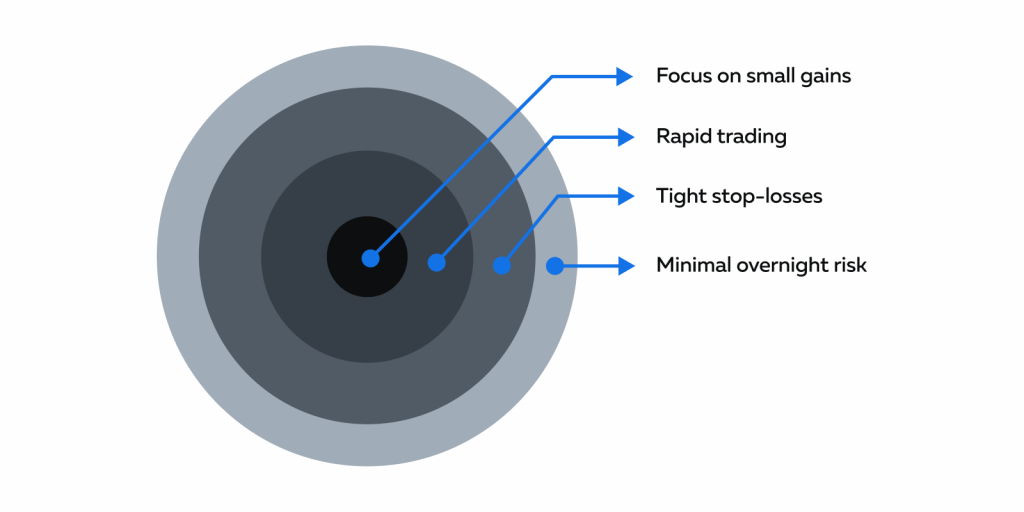
-
-
Focus on Small, Frequent Gains:
-
Scalping is all about accumulating small gains repeatedly throughout the trading day.
-
Scalpers are not concerned with holding positions for extended periods or riding large trends.
-
Instead, they seek to profit from the bid-ask spread and minor price fluctuations that occur continuously in the market.
-
Rapid Trading Execution:
-
Scalpers rely on lightning-fast execution of trades.
-
They often use specialized trading platforms and technologies to ensure that their orders are filled quickly and at the desired price.
-
Tight Stop-Losses:
-
Risk management is crucial in scalping.
-
Scalpers place strict stop-loss orders to limit potential losses in the event of adverse price movements.
-
The goal is to minimize losses and let the winning trades accumulate.
-
Minimal Exposure to Overnight Risk:
-
Scalpers avoid overnight positions.
-
They close out all their positions by the end of the trading day to eliminate exposure to:
-
Overnight market movements
-
News events
-
Gaps in prices when markets reopen.
-
-
The Suitability of Scalping for the Futures Market:
Scalping is well-suited for the futures market due to several reasons:
|
Reasons |
Characteristics of Futures Market |
The Connection |
|
Liquidity |
|
|
|
Volatility |
|
|
|
Tight Spreads |
|
|
Trading on the Pulse of News
Staying updated with global news and macroeconomic events is of paramount significance for futures traders. The financial markets are highly sensitive to information and news flow, and the ability to react swiftly and accurately to breaking news can have a profound impact on trading success.
Here’s why staying informed is crucial:
-
Market Sentiment and Direction:
-
News and economic events significantly influence market sentiment.
-
Positive news might boost optimism, leading to buying activity.
-
While negative news can create fear and drive selling pressure.
-
Traders who are in tune with the news can anticipate shifts in market sentiment.
Volatility and Price Swings:
-
Major news releases and events increase volatility in the market.
-
Increased volatility can create trading opportunities but also poses risks.
-
Traders need to be prepared for sharp price swings and understand how to navigate such conditions effectively.
-
Economic Indicators:
-
Economic data releases, such as employment reports, GDP figures, and central bank decisions, can directly impact futures markets.
-
These indicators provide insights into the health of economies and influence decisions about interest rates, which, in turn, affect bond and currency futures.
-
Geopolitical Events:
-
Geopolitical events, such as elections, conflicts, or international trade disputes, can have a profound impact on futures markets.
-
For example, the outcome of a presidential election might lead to changes in policies that affect industries like healthcare or energy, impacting corresponding futures contracts.
-
Some prominent examples of past events affecting futures prices:
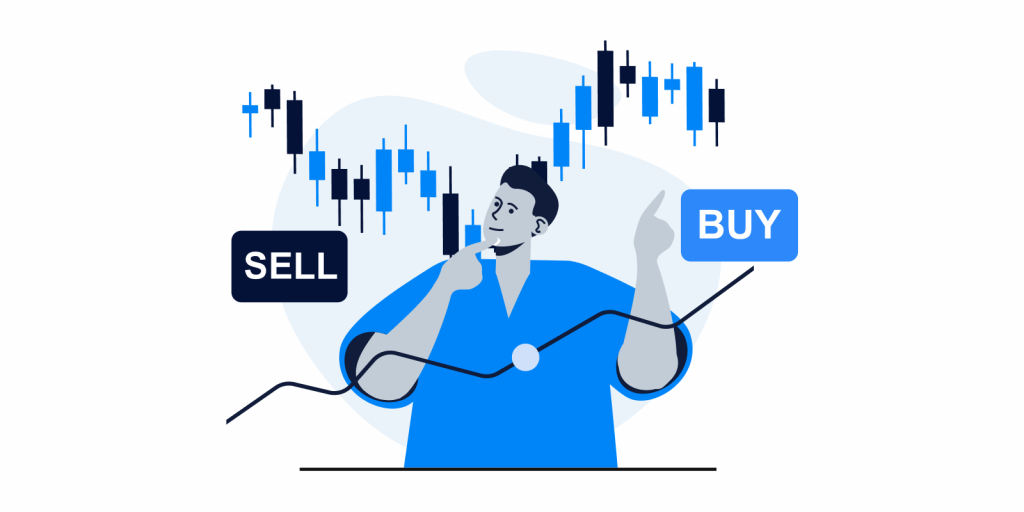
i) COVID-19 Pandemic (2020)
The outbreak of the COVID-19 pandemic had a profound impact on futures markets worldwide. Equity futures saw massive sell-offs in response to the economic uncertainty caused by lockdowns and business disruptions.
Conversely, futures contracts related to precious metals and pharmaceutical companies saw substantial price increases as investors sought safe-haven assets and potential treatments.
ii) Brexit Referendum (2016)
The UK’s decision to leave the European Union (Brexit) led to significant volatility in currency futures markets, particularly the British Pound (GBP).
As the referendum results unfolded, the GBP futures experienced sharp declines. Traders who anticipated this event and reacted accordingly had the opportunity to profit.
iii) Federal Reserve Interest Rate Decisions
The U.S. Federal Reserve’s announcements regarding interest rate changes or monetary policy shifts can have a profound impact on various futures markets.
For instance, an unexpected interest rate cut can lead to increased demand for equity futures, as lower rates make borrowing cheaper and can stimulate economic activity.
iv) OPEC Production Cuts (Various Years)
Decisions by the Organization of the Petroleum Exporting Countries (OPEC) to reduce oil production quotas have historically affected oil futures prices.
Announcements of production cuts have typically led to higher oil prices, while increases in production quotas have had the opposite effect.
v) Natural Disasters
Events like hurricanes, earthquakes, or droughts can disrupt supply chains and affect commodities futures. For example, a hurricane in the Gulf of Mexico can disrupt oil production and refining, leading to spikes in oil futures prices.
Advantages of Day Trading Futures
Day trading futures offers several compelling advantages, each of which can significantly impact a trader’s success. Let’s explore these advantages in detail:
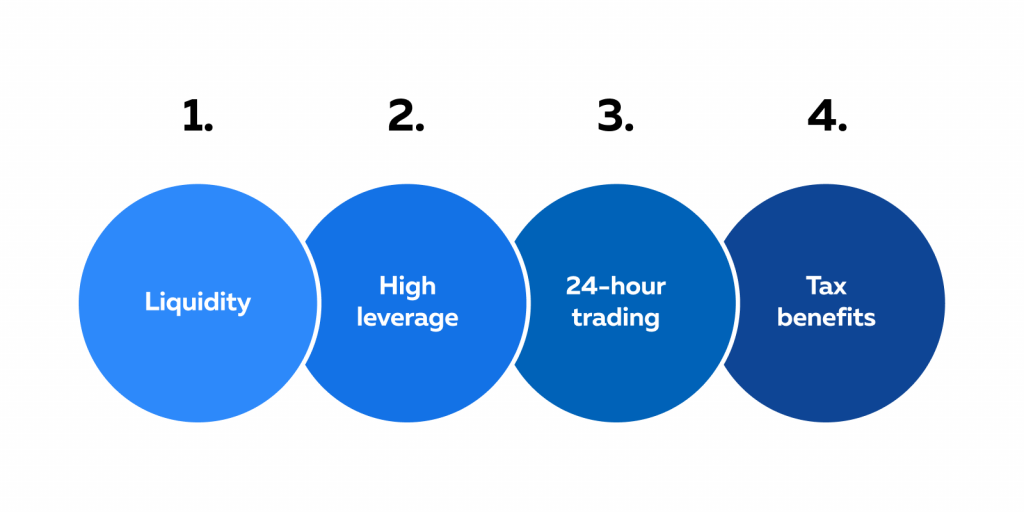
|
Advantages |
Meaning |
Benefits |
|
Liquidity |
|
i) Execute their orders at preferred price levels.
|
|
High Leverage
|
|
|
|
24-hour Trading Opportunities
|
|
|
|
Tax Benefits:
|
|
|
The Risks of Day Trading Futures
Day trading futures can seem enticing, with the potential for significant profits from relatively small investments. However, it’s crucial to recognize that they come with a high level of risk. Novice traders are often advised to approach day trading futures cautiously and consider gaining experience through simulated trading or education before committing real capital.
Let’s explore some of the prominent risks associated with day trading futures:
1. Leverage’s Double-Edged Sword:
-
Leverage allows traders to open a bigger position by investing only a small amount of capital.
-
While this can amplify potential gains, it also exposes traders to significant losses.
Let’s illustrate this with an example scenario:
Mr. A wants to speculate on the price of crude oil using a futures contract. The current price of one crude oil futures contract is $50,000. Without leverage, the trader would need to invest the full $50,000 to control one contract. However, with 10:1 leverage, the trader can control one contract with only $5,000 as margin.
|
The Gain Potential |
The Loss Potential |
|
|
This example illustrates how leverage can magnify both potential gains and potential losses, making it a double-edged sword for futures traders.
2. Market Volatility
-
Futures markets are known for their volatility, which arises from a variety of factors, including:
-
Global events
-
Geopolitical tensions, and
-
Economic data releases.
-
This creates market volatility, which is often construed as a significant risk in day trading futures.
|
Effect of Market Volatility on Trader Position |
Importance of Stop-Loss Orders |
|
|
By understanding and actively managing these risks, day traders can make informed decisions and approach day trading futures with a more realistic view of the challenges involved.
How to Enhance Your Day Trading Experience
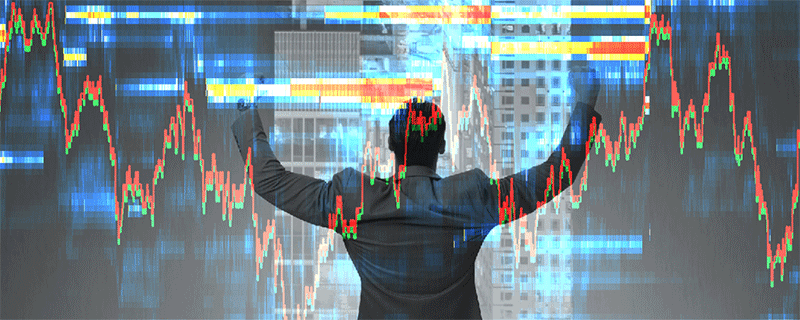
Enhancing your day trading experience requires access to tools and platforms that provide real-time insights and a competitive edge in the futures market. Bookmap is one such platform that offers a visual interface designed to:
-
Help traders decipher market intricacies
-
Identify liquidity shifts
-
Understand order flow, and
-
Adapt to evolving market dynamics.
-
-
Real-time Heatmap:
-
-
Bookmap’s heatmap is a powerful feature that displays real-time market data in a visually intuitive manner.
-
It represents the order book depth at various price levels.
-
This helps traders identify significant levels of supply and demand.
-
-
Identifying Liquidity Shifts:
-
-
The heatmap’s color coding and transparency settings allow traders to spot changes in liquidity at specific price levels.
-
Liquidity shifts can indicate potential price reversals or breakouts.
-
This helps traders make more informed decisions about entry and exit points.
-
-
Transparent Order Flow:
-
-
Bookmap provides a detailed view of order flow in real time.
-
Traders can see not only the quantity of orders at each price level but also the market microstructure.
-
Additionally, they can see order book imbalances.
-
-
Bookmap’s Adaptability and Trading Tools
Bookmap offers several features and modern tools that allow traders to understand evolving market dynamics. Here’s how it helps traders respond effectively to changing market conditions:
|
Modifying Strategies in Real-Time
|
Visualization of Historical Data
|
Customization and Alerts
|
|
|
|
By utilizing Bookmap’s real-time heatmap, transparent order flow visualization, adaptability, and trading tools, day traders can gain a competitive edge and make more informed decisions in the dynamic futures market.
Conclusion
Futures day trading holds the promise of significant rewards, driven by factors like high liquidity and leverage, as well as opportunities to profit from intraday price movements. However, it’s crucial to strike a balance between these potential rewards and the inherent risks.
This is largely because rewards offered by futures day trading come with their fair share of risks, which are leverage risk, rapid and unexpected price swings, and more.
Advanced tools like Bookmap provide traders with a visual advantage, enabling them to decipher market complexities, spot liquidity shifts, understand order flow, and adapt their strategies in real time.
Ready to take your day trading to the next level? Discover how to trade futures using the power of Bookmap with our detailed step-by-step guide. Check it out now: Trade via Bookmap: A Detailed Step-by-Step Guide